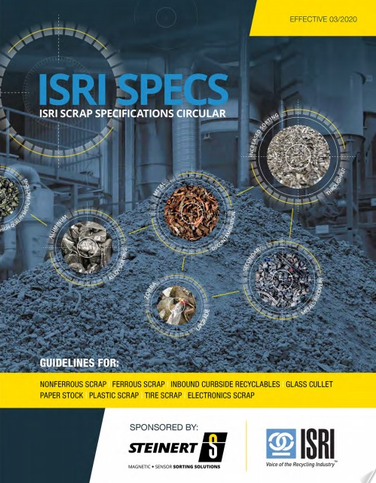According to market data collected by Joe Pickard and Bret Biggers, ISRI’s chief economist/director of commodities and senior economist, respectively, the quantity of U.S. scrap exports—including all ferrous, base metal, precious metal, paper, plastics, textiles, glass, and rubber—dropped to 35.1 million mt in 2020, a decrease of 8% from 2019. Overall, Canada was the largest market for last year’s exported scrap commodities.
At the same time, the value of U.S. scrap exports increased 8% year on year to $20.8 billion. This was due in part to the value of precious metal scrap, which rose more than 50%, despite being a small share of the volume. Investment in safe haven assets like gold and silver drove much of this rise, Pickard says, due to economic uncertainty caused by the pandemic. “It’s not unusual for there to be volatility in precious metal pricing,” he says. “What is unusual is for the overall value in exported scrap to go up, while the overall quantity exported drops.”
In terms of commodities, ferrous was the only major scrap export to see an increase in volume. Ferrous scrap exports increased to nearly 16 million tons, with Turkey, Mexico, and Taiwan driving demand. Other metals fared less well. Copper and copper alloy exports dropped about 11% and aluminum slipped just slightly, by about 1%.
Paper and fiber scrap saw a drop in export volume of nearly 13%, although pulp grades rose nearly 23%. Export of plastics declined 7%, continuing their downward trend.
Although exports of most scrap commodities dropped with corresponding manufacturing shutdowns related to the coronavirus pandemic and shifting trade policies, they still exceeded scrap imports by $14 billion in 2020, making a “positive contribution to the U.S. trade balance,” the economists say. This is in spite of U.S. scrap imports that increased by 5% year on year from 2019, mainly in the form of ferrous scrap from Canada and Mexico. Over the past five years, “the positive impact of U.S. scrap trade flows has exceeded $63 billion,” Pickard and Biggers note.
A couple of factors also combined to provide an economic boost. Sectors like manufacturing and construction picked up in the latter half of 2020, driving demand for scrap metals, while need for essential tissue products created a demand pull for recovered paper, Biggers notes. Overall, the economic situation for the recycling industry was “relatively resilient,” Pickard says.













